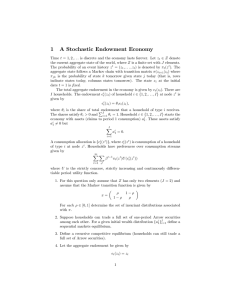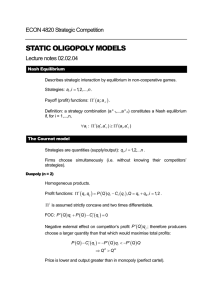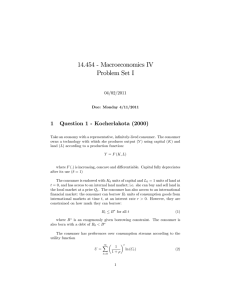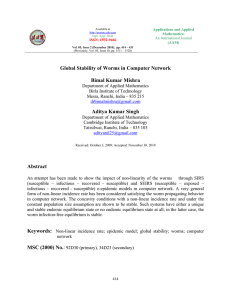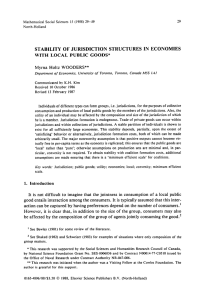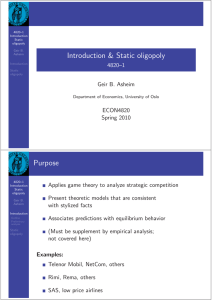General equilibrium analysis: Introduction Purpose of equilibrium analysis
advertisement
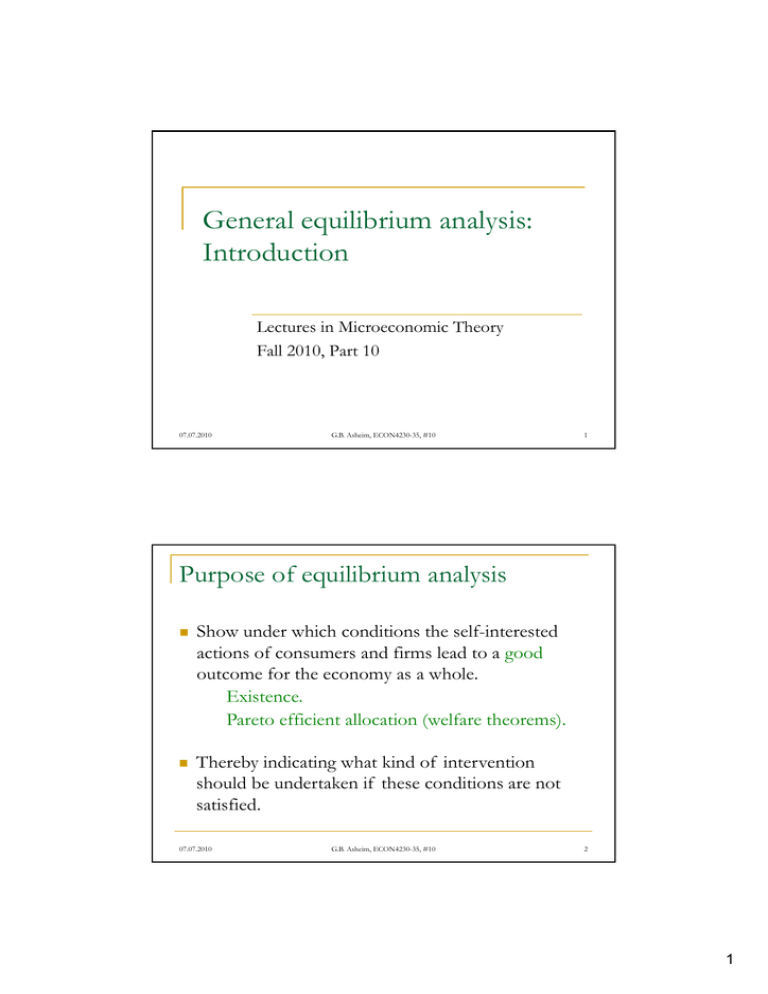
General equilibrium analysis: Introduction Lectures in Microeconomic Theory Fall 2010, Part 10 07.07.2010 G.B. Asheim, ECON4230-35, #10 1 Purpose of equilibrium analysis Show under which conditions the self-interested actions ti off consumers andd firms fi lead l d to t a goodd outcome for the economy as a whole. Existence. Pareto efficient allocation (welfare theorems). Thereby Th b iindicating di i what h ki kind d off iintervention i should be undertaken if these conditions are not satisfied. 07.07.2010 G.B. Asheim, ECON4230-35, #10 2 1 A competitive market is characterized by Sellers and buyers take the market price as given and determine their supply and demand accordingly. The market price is determined so that market supply = market demand. A good is transferred if and only if the price is paid. Sellers and buyers have the same information about the transferred good. 07.07.2010 3 G.B. Asheim, ECON4230-35, #10 Partial vs. general equilibrium analysis In a partial equilibrium model, all prices other than the price of the good studied are assumed to remain Price fixed. Aggregate supply for given factor prices. Equilibrium price. Aggregate demand for given prices of other goods and given income. Equilibrium quantity. Quantityy Q In a general equilibrium model, all prices are variable. A general equilibrium requires that all markets clear. 07.07.2010 G.B. Asheim, ECON4230-35, #10 4 2 Pure exchange All economic agents are consumers. ConsumpConsump tion goods Consumer 1 Consumer 2 Payments Given the market prices and initial endowment of consumption n mpti n goods, d consumers n m r choose h th the b bestt vector of consumption goods, given that positive net demand of some goods must be financed by positive net supply of other goods. 07.07.2010 5 G.B. Asheim, ECON4230-35, #10 With production Some economic agents are consumers, other agents are firms. Consumption goods and payments Consumers Profits Firms Labor (and capital) and Given the market Given the market prices, each consumer wages (and interest) prices and the chooses a best combination of technological constraints constraints, each firm chooses a labor supply and consumption combination of consumption good demand, given that he good supply and factor demand must pay for the consumption that maximizes profits. goods with his labor income. 07.07.2010 G.B. Asheim, ECON4230-35, #10 6 3
